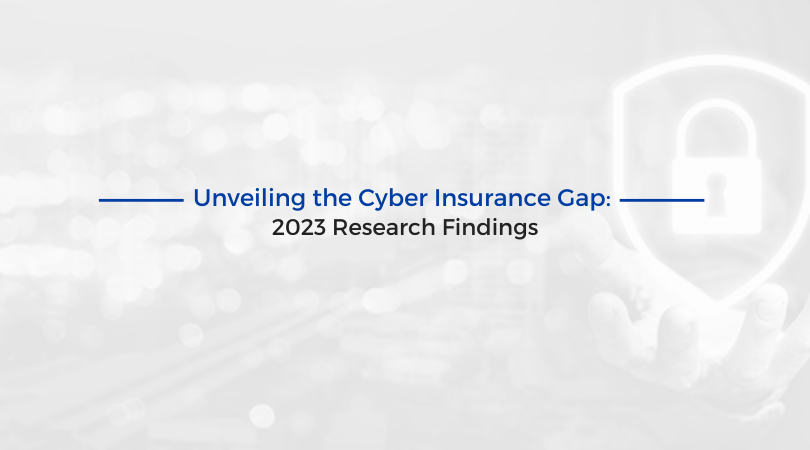The current cybersecurity threat landscape has expanded far beyond traditional boundaries. With this expansion comes an alarming rise in cyberattacks, ranging from data breaches to ransomware attacks, putting individuals and businesses at risk. If you’ve read our blog, you know that no industry or business size is spared as a target.
To mitigate these risks, cyber insurance emerged, promising financial protection from the potentially devastating consequences of cyber incidents. However, recent research conducted by Delinea has shed light on a concerning issue: the existence of a significant cyber insurance gap. In this blog, we’re analyzing the findings of the Delinea research and exploring what this gap means for individuals and businesses alike.
The Rise of Cyber Insurance
Cyber insurance, also known as cyber liability insurance or cyber risk insurance, is designed to help organizations and individuals minimize the financial fallout of cyber incidents. These incidents can range from data breaches and hacking to denial-of-service attacks and more. The insurance coverage typically includes expenses related to data recovery, legal fees, public relations efforts, and even ransom payments in some cases.
Why is There a Cyber Insurance Gap?
While cyber insurance seems like a prudent step towards securing digital assets, the recent research conducted by Delinea has uncovered a concerning trend – the cyber insurance gap. This gap is a result of the increasing frequency and sophistication of cyberattacks and the inadequate level of cyber insurance coverage held by organizations and individuals. To put it plainly, the potential losses due to a cyber incident often far outweigh the coverage provided by many insurance policies. We’ve discussed this idea on our blog before: our recommendation is not to ignore your cybersecurity just because you have cyber insurance. It seems we now have Delinea research to back up our stance at PK Tech.
Key Findings of the Delinea Research
A common thread observed in the research is the underestimation of cyber risks. Many individuals and businesses fail to recognize the severity of potential cyberattacks and the far-reaching consequences they can entail.
The research also revealed that many existing cyber insurance policies offer inadequate coverage. They often include limitations, exclusions, and loopholes that can expose policyholders to substantial financial losses. Wondering what this could look like in the “real world”? Check out this story we wrote about when an insurance company refused to pay a $7.5M crypto ransom for a “covered event.” Yep, you read that right.
Why did this happen? The financial impact of cyber incidents has surged over the past few years. From ransom payments to regulatory fines and legal fees, the costs associated with cyber incidents have escalated rapidly, surpassing the coverage offered by many insurance policies.
The research also uncovers that assessing cyber risk is a complex endeavor. Many insurance providers struggle to accurately evaluate an organization’s vulnerability to cyber threats, leading to the potential for mismatches between coverage and actual risk exposure.
Finally, the findings show that the cyber insurance landscape lacks standardization. This means that policy terms, conditions, and coverages can vary significantly between different insurance providers, adding to the confusion for policyholders.
How Your Business Should Address the Cyber Insurance Gap
The existence of the cyber insurance gap has profound implications for both businesses and individuals. Inadequate coverage can result in dire financial consequences following a cyber incident, ranging from business disruptions and reputational damage to potential bankruptcy. To address this gap, here are four key steps we recommend:
- Comprehensive Risk Assessment: Organizations and individuals must conduct thorough risk assessments to accurately gauge their exposure to cyber threats. This assessment should consider their digital assets, the potential impact of an attack, and their current insurance coverage. If you are a business and not sure how to begin tackling this, get in touch with us.
- Tailored Policies: Look for cyber insurance policies that are tailored to your organization’s specific needs. Avoid one-size-fits-all solutions and work with insurers who understand your industry and the unique risks you face. Ask us if you are filling out a cyber insurance policy application, and we can help.
- Continuous Coverage Review: Cyber risks evolve rapidly. Regularly review and update your cyber insurance coverage to ensure that it keeps pace with the changing threat landscape. Communicate with your managed IT service provider to ensure you are adequately covered.
- Education: Educate yourself and your employees about cyber risks and the importance of employee cooperation in minimizing cyber risks. A well-informed workforce can contribute significantly to risk minimization.
As the digital world expands, robust cyber insurance coverage is essential. The recent Delinea research supports an urgent need for individuals and organizations to reevaluate their approach to cyber risk management. Bridging the cyber insurance gap requires a combination of awareness, education, and strategic policy selection.
Questions about cyber insurance or need help filling out a cyber insurance policy application? PK Tech is here to help. Get in touch with our team here.
